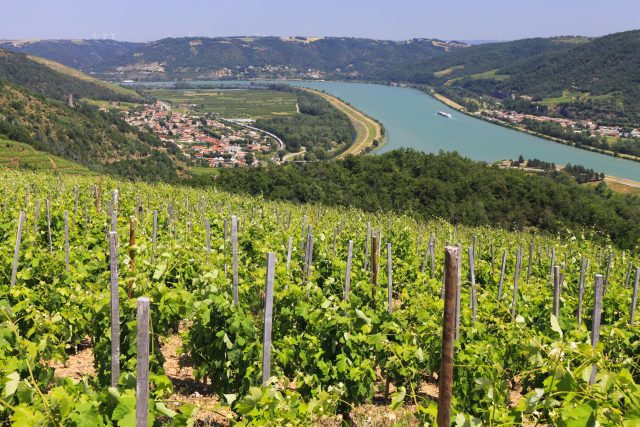This website uses cookies so that we can provide you with the best user experience possible. Cookie information is stored in your browser and performs functions such as recognising you when you return to our website and helping our team to understand which sections of the website you find most interesting and useful.
What’s driving the Rhône’s welcome resurgence?
As the secondary market cools, any winemaking region that can continue to post impressive growth is bound to catch the eye. Step forward the Rhône Valley and a winning mix of famous names and emerging domaines. Richard Woodard reports.

As growth in the global fine wine market has slowed in recent months, the success stories attract even more attention than usual. In this context, the uptick in sales of wines from the Rhône Valley constitutes a welcome and promising trend.
The attractions of the Rhône include a strong set of recent vintages – 2021 is the most recent example, with significant praise from critics, but it caps an excellent run from 2015 (northern Rhône) and 2016 (south) through further good years spanning 2017 to 2020.
The Rhône also benefits from a reputation for dependability: this is a region less prone to the kind of secondary market volatility that can prove so off-putting to collectors. Its “investable” character has been strengthened, according to Matthew O’Connell, head of investment at Bordeaux Index and CEO of the company’s LiveTrade platform, by the fact that the top names look like a savvy investment in current market conditions.
The result was a 6% increase in sales of Rhône wines at Bordeaux Index in the first quarter of 2023, an impressive trajectory compared to general trends in the marketplace.
O’Connell observes that, while some top producers from the region have seen slight price reductions since the end of 2022 (for instance, Château Rayas, Guigal and Jaboulet), individual vintages have continued to rise, such as Rayas 1995, Guigal La Mouline 2011, Rayas Blanc 2007 and Rayas Pignan 2005.
What lies behind this resilience? “Possibly the Rhône is the region where quality versus price is the most undervalued,” O’Connell explains. “I struggle to think of a region with as many exciting wines within the £30-50 range, perhaps most markedly in the northern Rhône.”
There are similarities with another sought-after region, he believes. “I think it is most comparable to Piedmont in not getting enough consistent market recognition,” says O’Connell, before adding the caveat that the Rhône is “potentially a bit more accessible than Piedmont, for the simple reason that Nebbiolo is a particularly difficult grape for collectors to understand properly”.
Trade in Rhône wines continues to be driven by a handful of marquee names, including Guigal in Côte-Rôtie, Rayas in Châteauneuf-du-Pape, and Chave, Jaboulet and Sorrel in Hermitage. But this is beginning to change, says O’Connell.
“Château Rayas and Chave are the ones that have moved ahead in recent times to an outsized extent,” he reports. “We’ve seen a big uptick in Marc Sorrel, whose wines are desirable, and a lot of the Côte-Rôtie producers, whether more widely available wines like
Domaine René Rostaing, or more niche names like Yves Gangloff.”
Smaller-volume producers to watch include Jamet in Côte-Rôtie – lauded by Berry Bros & Rudd for “incredible nuance and ethereal balance” – and Domaine Pierre Gonon, a 10-hectare estate including vines on the slopes of Mauves, in the heart of Saint-Joseph.
O’Connell expects this trend of greater differentiation between the top names, rather than a ‘rising tide lifting all boats’ dynamic, to continue in the future. “I’d expect to see further volume growth in the Rhône,” he says. “People are looking for the best to collect, for value, super high-quality wines and super high-quality winemaking – and the wines are very terroir-specific.”
Maintaining this recent momentum in the context of a cooler overall market will be key to the immediate future of trading in the Rhône. But O’Connell still sees great potential for a region that, he says, “is not getting the full attention it deserves”, given “the quality and excitement which the wines display”.
He adds: “The Rhône ticks all the boxes, and the recent resurgence is something that will persist going forwards.”

